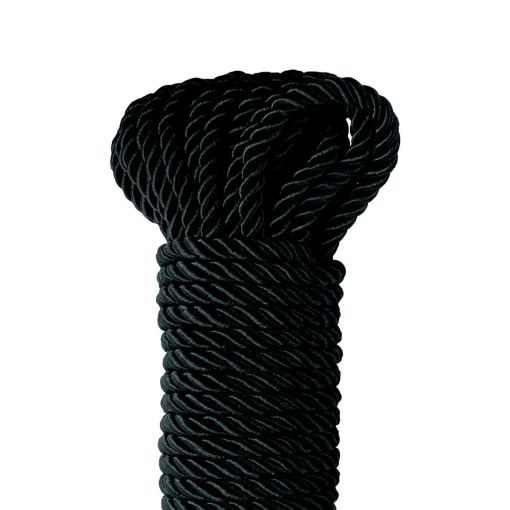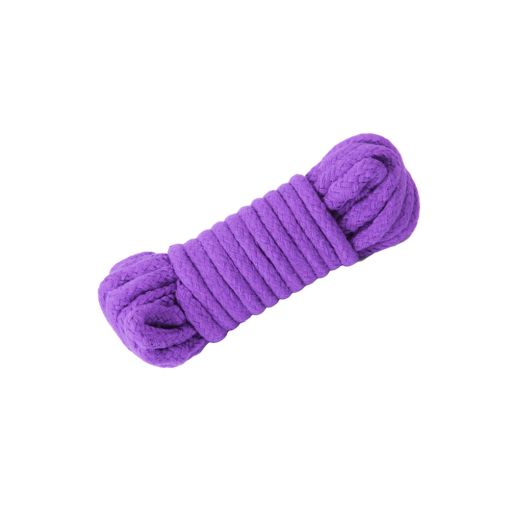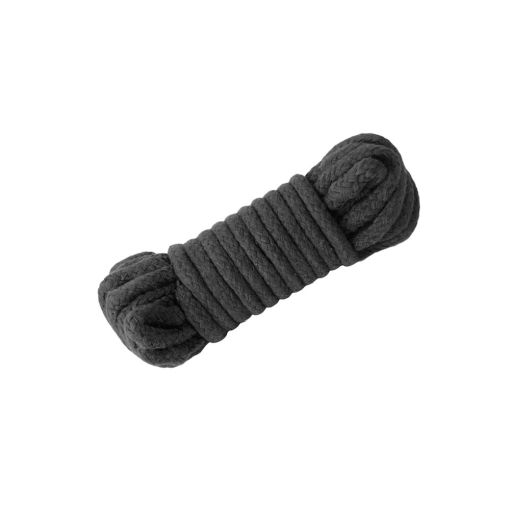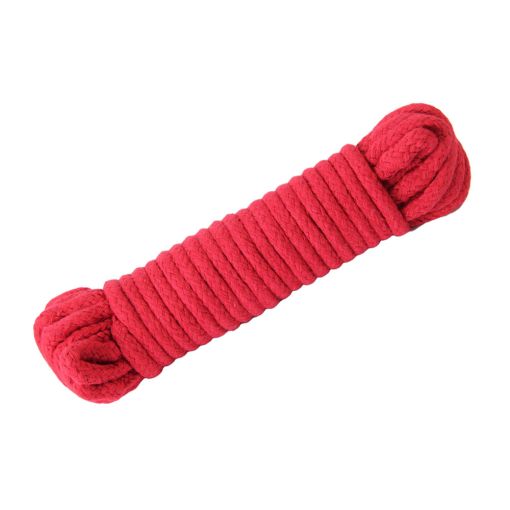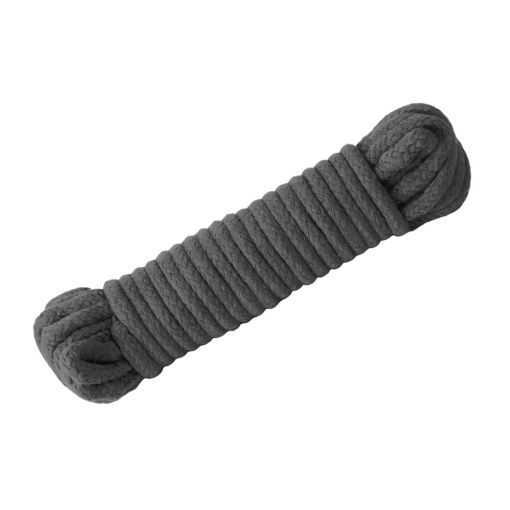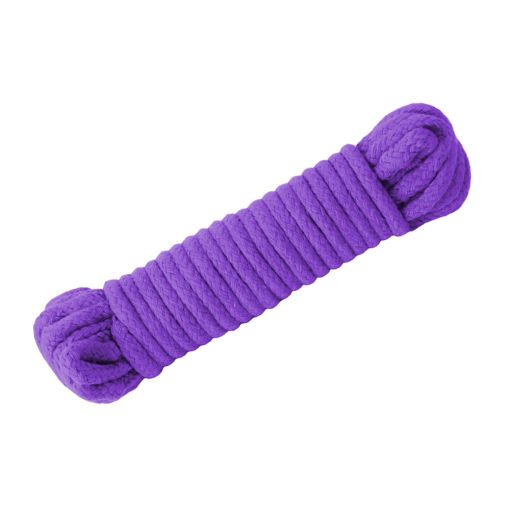Shibari Rope
-
Fetish Fantasy Deluxe Silk Rope BlackSpecial Price $21.75 Regular Price $29.00In stock
-
Love in Leather - 10m Bondage Rope PurpleSpecial Price $21.75 Regular Price $29.00In stock
-
Love in Leather - 10m Bondage Rope - BlackSpecial Price $21.75 Regular Price $29.00In stock
-
Love in Leather 20M Bondage Rope RedSpecial Price $29.25 Regular Price $39.00In stock
-
Love in Leather 20M Bondage Rope BlackSpecial Price $29.25 Regular Price $39.00In stock
-
Love in Leather 20M Bondage Rope PurpleSpecial Price $29.25 Regular Price $39.00In stock
Shibari Rope
Welcome to the sensual world of Shibari Rope—where restraint becomes reverence, and every knot is a whisper of intention.
Shibari, the Japanese art of rope bondage, isn’t just about tying someone up. It’s about sculpting eroticism, guiding energy, and building trust with each deliberate wrap. The rope becomes your medium. The body, your canvas. The bond between rigger and rope bottom? Electric.
Whether you're a beginner experimenting with basic Shibari rope tying or a seasoned rope top orchestrating full-body suspensions, Shibari ropes let you create beauty, erotic tension, and intimate surrender—all with nothing more than fibre and connection.
Let’s dive into this alluring, artful world of knots and nuance.
Why Choose Shibari Rope?
Shibari Rope is for lovers, explorers, and artists. It’s a choice that speaks to the slowness of seduction—the kind of intimacy that takes its time.
Unlike conventional bondage cuffs or straps, Shibari Rope invites intention. The act of tying becomes part of the play. It’s as much about what the rope feels like on the skin as it is about what it communicates—dominance, devotion, desire.
- Sensory artistry: Each loop caresses the skin, each knot anchors meaning.
- Tactile pleasure: Natural fibres awaken the nerve endings like a lover’s fingertips.
- Versatility: From decorative chest harnesses to functional limb restraint or full suspension—rope adapts.
- Emotional depth: Communication, trust, and vulnerability are woven into every session.
- Visual impact: Rope creates a striking aesthetic, whether you're tying for play, performance, or photography.
It’s not just bondage. It’s an erotic ritual.
Top Features That Make Shibari Rope Irresistible
- Natural Fibres (Jute or Hemp): These ropes provide the perfect balance of grip and give. They hold knots securely without excessive tightening, and they create friction that feels deliciously raw against skin.
- Sensory Texture: From scratchy and primal to soft and seasoned, rope texture evolves over time. Jute offers a crisp bite. Hemp mellows into supple familiarity. Each stroke across the skin becomes a sensation you can’t forget.
- Versatile Lengths: Typical rope lengths are 5–10 metres (15–30ft), ideal for chest harnesses, limb bondage, and intricate ties. For more advanced play, longer ropes or multiple pieces provide limitless expression.
- Eco-Friendly & Sustainable: Hemp and jute are renewable and biodegradable—bondage that’s as kind to the Earth as it is enticing.
- Conditioned or Raw Options: Pre-conditioned rope is ready for instant seduction. Raw rope lets you develop a deeper relationship by breaking it in yourself—softening, oiling, waxing, even baking it to bring out its best.
- Diameter Variety: Standard 6mm rope is a go-to for balance between comfort and control. Opt for 5mm for delicate work or 8mm for a bolder presence and cushioned feel.
- Hand-Finished Details: Beautifully whipped ends or heat-sealed synthetic tips reduce fraying and extend your rope’s lifespan. A polished detail that speaks to care and craftsmanship.
Types of Shibari Rope
Jute Rope: Light, fast, and traditional. Jute is ideal for experienced riggers and performance artists. Its responsiveness makes tying fluid and precise—but it requires breaking in and Shibari rope treatment until broken in.
Hemp Rope: Heavier and more durable than jute, hemp has a warm, earthy grip and mellows over time. It’s excellent for all levels of experience, offering strength and safety for floor work and suspension.
Cotton Rope: Soft and forgiving, cotton is perfect for beginners or those with sensitive skin. It’s easy to clean and tie but lacks the grip and texture of natural bast fibres.
Synthetic Rope (Nylon, MFP, Polyester): Smooth, strong, and low-maintenance. These ropes are often used for decorative bondage or water play. They’re less traditional but ideal for those with allergies or a desire for vibrant colours.
How to Use Shibari Rope
Rope isn’t just tied—it’s wielded.
Start simple. A single-column tie around the wrist or ankle. A double-column tie for restraint. As you grow more confident, build toward hishi-karada (diamond body harnesses) or shinju (chest bindings).
- Preparation is part of foreplay: Lay your rope flat. Check for frays. Breathe. Set the mood.
- Tie with intention: Follow the lines of the body. Honour curves and contours. Let the rope guide you.
- Create contrast: Combine tight, controlled binds with loose wraps or decorative flourishes.
- Focus on the senses: Add blindfolds, ice, or whispered words for a layered experience.
- Never forget safety: Learn anatomy. Avoid pressure on nerves (like the ulnar at the elbow). Keep shears close. Communicate continuously.
When used consciously, rope shibari becomes an extension of you—a tool for seduction, safety, and surrender.
How to Choose the Right Shibari Rope for You
Beginners: Start with four ropes (two at 5m, two at 10m, 6mm). Choose cotton for comfort or jute/hemp for authenticity. Pre-conditioned is ideal for immediate use.
Intermediate: Try treated hemp or jute. Experiment with colour and diameter. Add ropes of varied lengths for more complex ties. Start exploring floor ties or light partial suspensions with proper education.
Advanced: Use prepped natural fibres with reinforced cores or upgraded suspension sets. Expand into 7–8 ropes, include uplines, carabiners, and anchor systems. Build a ritual around conditioning your rope—waxing, oiling, and storing it like a cherished lover.
Your kit should reflect your unique style and play preferences—intentional, expressive, and safe.
Many beginners ask, how long should Shibari rope be? A great starting point is two 5m and two 10m ropes—just enough for harnesses, chest ties, and classic binds.
Your rope kit should feel like an extension of your personality—bold, elegant, and purposefully chosen.
Shibari Rituals & Emotional Intimacy
The beauty of rope lies not just in the binding—but in the bonding.
Every session is a conversation without words. The tightness of the tie. The pause in your pull. The flick of the rope’s tail across bare skin. It’s all part of the story.
In Japanese tradition, kinbaku translates to “tight binding,” but many practitioners see it as an act of spiritual connection. The top offers control. The bottom offers trust. And together, they build a shared narrative.
Use Shibari to:
- Cultivate mindfulness and presence
- Deepen erotic exploration
- Reclaim power in consensual play
- Express love through restraint, release, and care
Aftercare is part of this ritual. Untying should be as slow and sensual as tying. Touch. Wrap. Breathe. Check in. Because rope holds more than bodies—it holds emotion.
Shibari Rope FAQs
What’s the best rope for beginners?
For those new to Shibari, cotton rope is a great starting point—it’s soft, forgiving on the skin, and easy to handle. It’s perfect for practicing basic ties like single and double column knots. If you’re seeking a more authentic experience, pre-conditioned jute or hemp ropes provide the traditional texture and aesthetic with reduced prep time. Stick with 6mm diameter and lengths between 5–10 meters to give yourself plenty of versatility while learning.
Can I use Shibari Rope for suspension?
Yes, but only if you are properly trained. Suspension is an advanced practice that carries risks if performed without anatomical knowledge, safety equipment, or experience. You’ll need suspension-grade rope (strong, natural fibre like jute or hemp), reliable uplines, anchor points, carabiners, and safety shears. Always have a spotter and never suspend someone from a structure that isn’t rated to support the load. Safety, communication, and education are non-negotiable.
Is Shibari safe?
Shibari is safe when practiced with care and intention. Learn the body’s pressure points and nerve paths—especially around the arms, thighs, and neck. Always check for tingling, numbness, or discolouration, which can signal circulation or nerve issues. Use safety shears for emergency release and check in regularly with your partner. Trust and verbal consent should guide every session. Done responsibly, Shibari is not only safe—it’s deeply connecting.
How do I clean and maintain my rope?
For natural fibre ropes like jute and hemp, avoid soaking them in water. Instead, wipe with a dry or slightly damp cloth and hang them to air dry. Conditioning your rope (using rope oil, wax, or even baking) helps preserve texture and longevity. Always store them loosely coiled in a breathable bag, away from direct sunlight or damp conditions. Synthetic ropes (like nylon or polyester) can be hand washed gently with mild soap and water, then air dried completely before storage.
What is Shibari rope treatment?
Shibari rope treatment is the process of preparing and maintaining natural fibre ropes—especially jute and hemp—to make them soft, supple, and safe for skin contact. This typically involves singeing off stray fibres, oiling or waxing the rope to condition it, and baking it gently to seal in moisture. A well-treated rope glides beautifully, smells earthy, and performs with strength and consistency, enhancing every tie.
How many ropes do I need to start?
Start with at least four ropes: two at 5 meters and two at 10 meters, all in 6mm diameter. This gives you enough material for chest harnesses, wrist and ankle restraints, and basic full-body ties. As your skills grow, you can add more lengths, colours, and thicknesses to suit your specific style and techniques—whether floorwork, decorative bondage, or suspension.
What accessories do I need?
At minimum, invest in trauma shears for safety, a soft storage bag, and a clean surface for rope play. A blindfold or silk scarf adds sensory layering. Intermediate and advanced users may want carabiners, rigging plates, suspension rings, climbing-rated hardware, or aftercare essentials like a warm blanket, massage oil, or water. The right accessories enhance safety, comfort, and ritual—and make your scenes more immersive.
Your journey with Shibari Rope is yours to create. Whether you crave gentle restraint or intricate rope artistry, there’s a rope that fits your hand, your body, your desire.
Tie with love. Play with respect. Choose rope that stirs your senses and elevates your scenes.
Be daring. Be bound. Be breathtaking.


